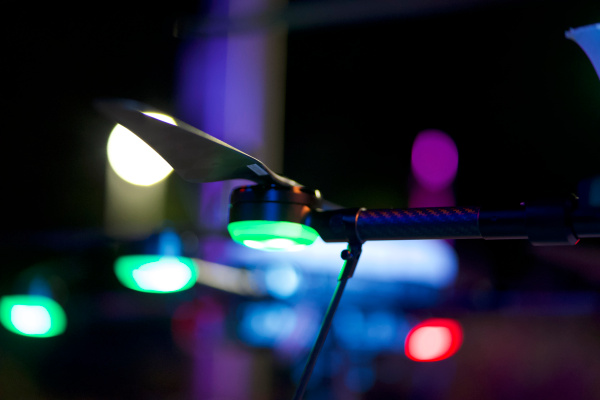
Emergency response is a time-sensitive business. When fires burn or a driver crashes their car, seconds can mean the difference between saving lives and watching a situation spiral rapidly out of control. For fire and police departments, getting teams on site can be challenging, what with the vagaries of traffic and bad routing.
Houston-headquartered Paladin is a startup building a custom drone hardware and software solution for cities to be able to respond to emergencies faster and with better data. After years of development, the company is publicly unveiling its Knighthawk and Watchtower products.
The Knighthawk is a custom-made drone designed for the specific needs of emergency response personnel. It comes complete with two cameras — one 10x zoom optical and one thermal — to provide the best video feeds on a developing situation at both day and night with only a half second latency. Importantly, the drone has a time range of 55 minutes and can travel multiple miles away to reach a site according to the company. Launch time can be as short as a few seconds from when a 911 call comes in.

Paladin Drones’ Knighthawk operating during the day. Image Credits: Paladin Drones
To manage the drones and watch the video feeds, operators use the company’s Watchtower software (available as an app) to place a pin on a map to direct the drone to the likely site of an emergency. Once there, uploaded video feeds will display in the app as well as in a 911 center’s existing computer-aided dispatch systems, a topic we covered quite a bit in our RapidSOS EC-1 from a few weeks ago.

Paladin Drones’ Watchtower allows operators to direct, manage, and watch video from Knighthawk drones. Image Credits: Paladin Drones.
The public launch is a huge step forward for the company, which TC last profiled in 2019 as it was emerging from Y Combinator with a $1.3 million seed from the likes of Khosla, Correlation Ventures, and Paul Buchheit. Back then, the focus was on building software to integrate with an off-the-shelf DJI drone. Paladin was experimenting with a beta Android app where an operator could place a pin on a map and direct the drone to a site.
Yet, that model proved insufficient for the task. CEO and co-founder Divy Shrivastava said that as the company developed its product, it learned it needed to own the hardware stack as well. “The drones that we were using weren’t purpose built for automation,” he said. “We ended up coming up with our own communication technology for our drones … so that we won’t lose connection.”

CEO and co-founder Divy Shrivastava. Image Credits: Paladin Drones.
Since the company’s founding in 2018, it has responded to about 1,600 emergencies according to its own internal data. The company has spent prodigious hours with departments in two locations — Memorial Villages in Houston and Orange Township in Ohio — responding to a handful of calls per day at specific hours.
That restriction hints at what has been one of the toughest challenges for the drone startup: regulations. The FAA has put in place strict rules around visual line of sight for operators of drones. In order to realize its vision of a completely seamless and easily deployed system, Paladin has had to collect extensive data and present it to the FAA to get operating waivers, which the agency offers through a “First Responder Tactical Beyond Visual Line of Sight” exception. So far, it has secured these types of waivers for the two cities it works with, and Shrivastava is confident that the company has developed a repeatable process for any new cities which want to purchase its products.
Installation is relatively simple according to Shrivastava. The drones themselves can be placed anywhere, even “a parking lot,” and are often stationed at a police department or firehouse. No special hardware or sensors or guidelines need to be installed in the city for the drones to process the terrain or understand their surroundings. Some software integration though is required to connect drones into the computer-aided dispatch system used by 911 call takers.
With the public launch and more proof points on the board, the company is focusing on ramping up sales and “our long-term goal is to have every single fire, police and first response agency use us,” Shrivastava said. The team has expanded to about 8, although the company’s other co-founder Trevor Pennypacker departed in late 2019, and now works at Tesla.









